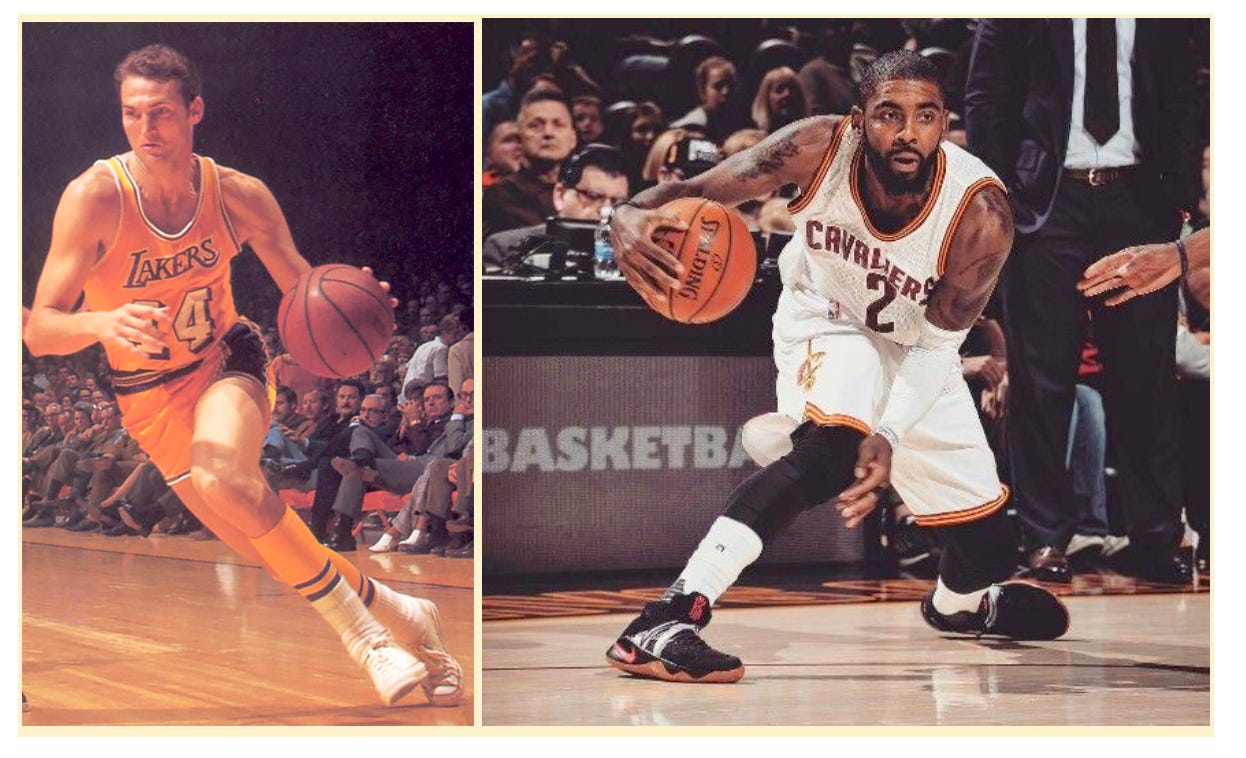Matthew Scott (MS) is a Group Strategy Director at Translation, helping to connect brands and culture. He lives in the Bay Area with his family and watches a lot of NBA & WNBA basketball.
Matthew here. Sneakerhead and basketball super-geek news alert! An odd injury happened last week when rising NBA star Tyrese Haliburton strained his hamstring after slipping during a routine play.
Watching the clip, you might assume the floor was wet, but when I saw the replay, my eyes were drawn to the sneakers he was wearing, the Kobe 9 Elite, and not just because that model is probably my all-time favorite Kobe hoop shoe.
WITI Classifieds:
We are experimenting with running some weekly classifieds in WITI. If you’re interested in running an ad, you can purchase one through this form. If you buy this week, we’ll throw an extra week in for free on any ad. If you have any questions, don’t hesitate to drop a line.
No, I recognized that Haliburton’s slip was something that could easily happen in these specific sneakers because there is no grip on the outer edges of the outsole. I've slipped and fallen myself playing in these while trying to turn a sharp corner. The shoe is just not great for sudden changes of direction that require planting the foot at an acute angle—which is exactly what Haliburton was doing when he got injured.
Why is this interesting?
For a long time, all that mattered in basketball shoes was ankle support and cushioning. Then, over the years, players got bigger, stronger, faster, and more agile. Now, your lead ball handlers come in all shapes and sizes. But the quickest and shiftiest guards look like Kyrie Irving – who plays with many more changes of pace & direction than legends of the past like Jerry West.
The evolution of players has put additional demands on sneakers beyond just the cushioning tech. For instance, starting around 2010, there was a massive focus on weight reduction.

Then, there was packaging up existing cushioning tech in different ways to deliver different experiences. For example, the sneakers Nike made for Kyrie (starting in 2014) were designed to be lower to the ground, with grippy traction coming up on the side of the outsole, all to provide exceptional “court feel.”

This came in contrast to the bulkier shoes Nike made for Lebron James, which featured massive air bubbles and/or stacked cushioning tech (Zoom + Max Air). This created a bit of a binary dichotomy between smalls and bigs. Small guys wear shoes like Kyrie's, and big guys wear shoes like Lebron's.
However, since the pandemic, Nike has been pushing an all-new family of performance basketball sneakers that are designed not for a specific athlete but for a specific playstyle. “With the game’s transition to a more ‘positionless’ style of play,” explains a Forbes article, “Nike has broken down the game in its simplest form, highlighted by the basic movements of the game, which are cutting, running and jumping.”
The G.T. Cut has been especially successful—hoopers love them. Many guards in the NBA play with them. They are known as some of the grippiest sneakers around. And with the 3rd version of this model about to launch, sneaker reviewers are pretty excited.
[[footnote: first link is to an OG hoop shoe reviewer who I’ve been watching for over a decade and the second link is to a foot doctor who tests and tears down the shoe to explain the tech]]
We are in a new era, one of playstyle specialization. And with that comes equipment specialization. This is smart because the writing's been on the wall for some time: Signature shoes don’t really matter anymore. What matters today is to find the shoe that is best designed to support how you want to play. Which is to say, there ain’t no way Haliburton would have slipped like that had he been wearing the G.T. Cuts. You gotta use the right tools for the job! (MS)
—
Thanks for reading,
Noah (NRB) & Colin (CJN) & Matthew (MS)
—
Why is this interesting? is a daily email from Noah Brier & Colin Nagy (and friends!) about interesting things. If you’ve enjoyed this edition, please consider forwarding it to a friend. If you’re reading it for the first time, consider subscribing.









@Henry Abbott @CoachThorpe @Jarod Hector had a thought when I saw Tyrese go down last week, check it out
@Tom Ziller thought you might find this interesting